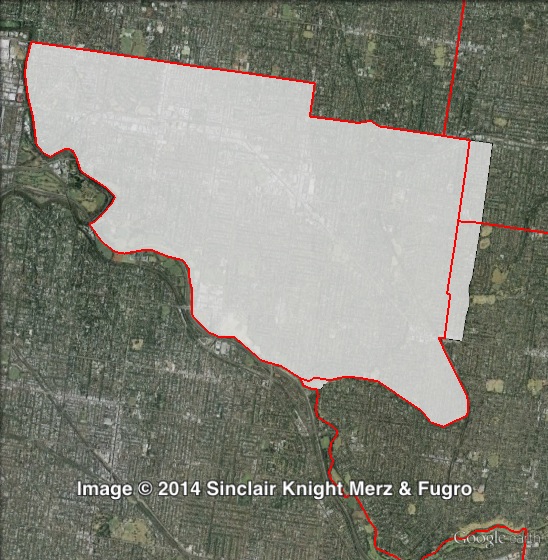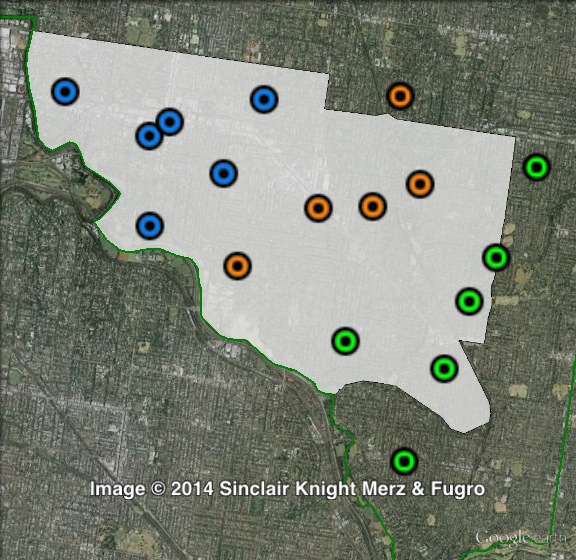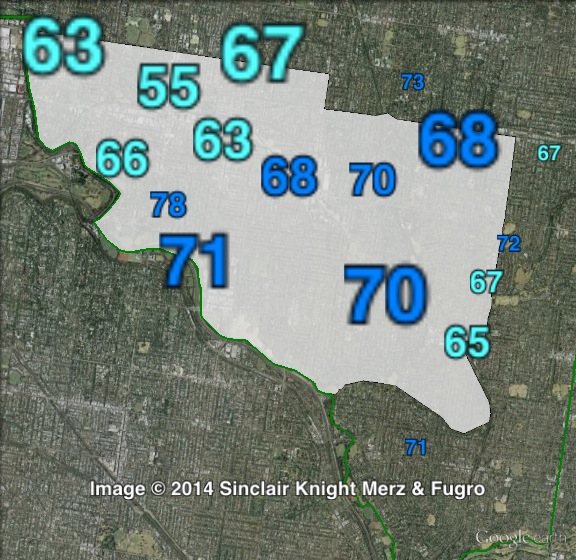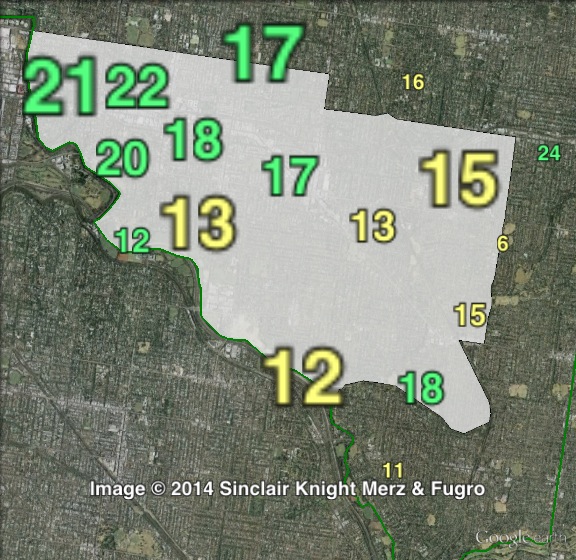LIB 16.6%
Incumbent MP
Ted Baillieu, since 1999.
Geography
Eastern Melbourne. Hawthorn covers southern parts of Boroondara local government area, and specifically the suburbs of Hartwell and Hawthorn and parts of the suburbs of Burwood, Camberwell, Canterbury and Glen Iris.

Redistribution
Hawthorn has mostly remained the same, expanded slightly east to take in more of Camberwell and Canterbury. These changes slightly reduced the Liberal margin from 16.7% to 16.6%.
History
Hawthorn has existed as an electoral district continuously since 1889. In that time, it has been dominated by conservative MPs, and has only been won by the ALP at one election in 1952.
The seat was won in 1902 by George Swinburne. He ended up serving as a member of the Commonwealth Liberal Party before his retirement in 1913.
He was succeeded by William Murray McPherson. McPherson served as Treasurer in the Nationalist state government from 1917 to 1923, and as Premier from 1928 to 1929. McPherson resigned from Parliament in 1930.
He was succeeded by Nationalist candidate John Gray at the 1930 by-election. Gray served as Member for Hawthorn until his death in 1939.
His seat was won at the 1939 by-election by the United Australia Party’s Leslie Tyack. He lost the seat at the 1940 state election to independent candidate Leslie Hollins, who had links to the Social Credit movement.
Hollins held Hawthorn for two terms, losing in 1945 to the Liberal Party’s Frederick Edmunds. He also held the seat for two terms, until in 1950 the Liberal Party replaced him with his predecessor Leslie Tyack.
Tyack was defeated in 1952 by the ALP’s Charles Murphy, the only ALP member to ever win Hawthorn. He left the ALP in the split of 1955, and lost his seat at that year’s election to the Liberal Party’s James Manson.
After one term, Manson moved to the new seat of Ringwood in 1958, and was replaced in Hawthorn by Peter Garrisson. He was re-elected in 1961, but in 1963 he resigned from the Liberal Party, and lost his seat as an independent in 1964.
Walter Jona was elected as Liberal Member for Hawthorn in 1964. He served as a minister in the Liberal government from 1976 to 1982, and retired in 1985.
Hawthorn was won in 1985 by the Liberal Party’s Phillip Gude, who had previously held the seat of Geelong East for one term from 1976 to his defeat in 1979. He served as a minister in the Kennett government from 1992 until his retirement in 1999.
Since 1999, Hawthorn has been held by Ted Baillieu. Baillieu won re-election in 2002, 2006 and 2010.
Ted Baillieu was elected Liberal leader shortly before the 2006 election, and led the Coalition to defeat in 2006 and victory in 2010.
Baillieu served as Premier from 2010 until March 2013, when he resigned as Premier and Liberal leader under pressure from his party’s MPs.
Baillieu has served on the government’s backbench since 2013. He announced his retirement in August 2014.
Candidates
Sitting Liberal MP Ted Baillieu is not running for re-election.
- Tim Hartnett (Greens)
- John Pesutto (Liberal)
- John McNally (Labor)
Assessment
Hawthorn is a safe Liberal seat.
2010 election result
| Candidate | Party | Votes | % | Swing | Redist |
| Ted Baillieu | Liberal | 21,036 | 60.89 | +4.83 | 60.53 |
| John McNally | Labor | 7,218 | 20.89 | -4.81 | 21.27 |
| Jenny Henty | Greens | 5,883 | 17.03 | +0.78 | 16.87 |
| Peter Grounds | Family First | 409 | 1.18 | -0.80 | 1.23 |
| Sex Party | 0.07 | ||||
| Democratic Labor | 0.04 |
2010 two-party-preferred result
| Candidate | Party | Votes | % | Swing | Redist |
| Ted Baillieu | Liberal | 23,060 | 66.74 | +4.48 | 66.60 |
| John McNally | Labor | 11,493 | 33.26 | -4.48 | 33.40 |

Booth breakdown
Booths in Hawthorn have been divided into three parts: east, west and central. The Liberal Party won a large majority of the two-party-preferred vote in all three areas, ranging from 64.2% in the west to 69.4% in the centre.
The Greens polled strongly, with a vote ranging from 14.2% in the east to 18.9% in the west.
| Voter group | GRN % | LIB 2PP % | Total | % of votes |
| West | 18.93 | 64.19 | 10,999 | 30.40 |
| Central | 14.62 | 69.43 | 7,784 | 21.52 |
| East | 14.19 | 68.37 | 5,223 | 14.44 |
| Other votes | 17.59 | 65.67 | 12,172 | 33.64 |



